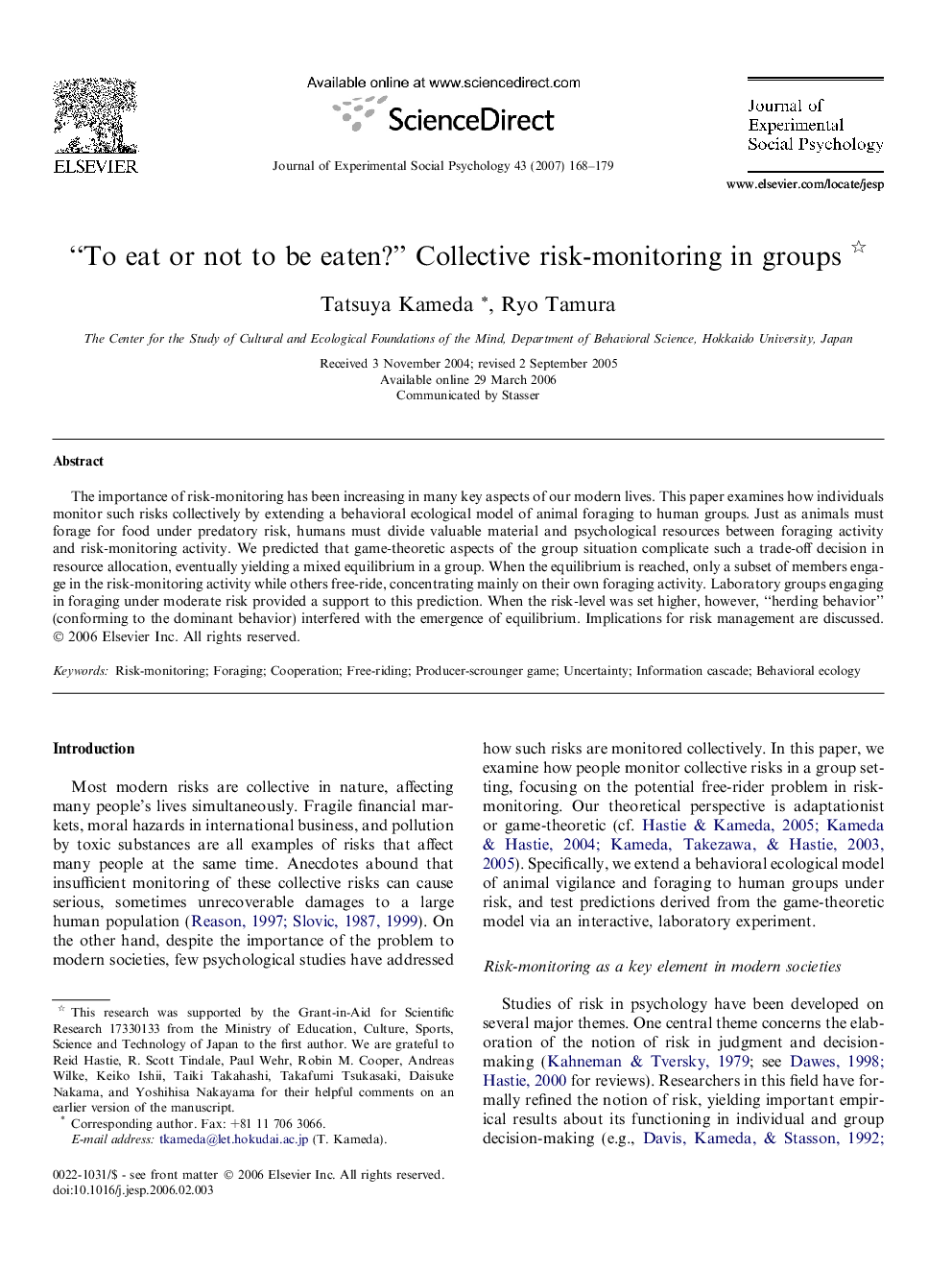| Article ID | Journal | Published Year | Pages | File Type |
|---|---|---|---|---|
| 948963 | Journal of Experimental Social Psychology | 2007 | 12 Pages |
The importance of risk-monitoring has been increasing in many key aspects of our modern lives. This paper examines how individuals monitor such risks collectively by extending a behavioral ecological model of animal foraging to human groups. Just as animals must forage for food under predatory risk, humans must divide valuable material and psychological resources between foraging activity and risk-monitoring activity. We predicted that game-theoretic aspects of the group situation complicate such a trade-off decision in resource allocation, eventually yielding a mixed equilibrium in a group. When the equilibrium is reached, only a subset of members engage in the risk-monitoring activity while others free-ride, concentrating mainly on their own foraging activity. Laboratory groups engaging in foraging under moderate risk provided a support to this prediction. When the risk-level was set higher, however, “herding behavior” (conforming to the dominant behavior) interfered with the emergence of equilibrium. Implications for risk management are discussed.
